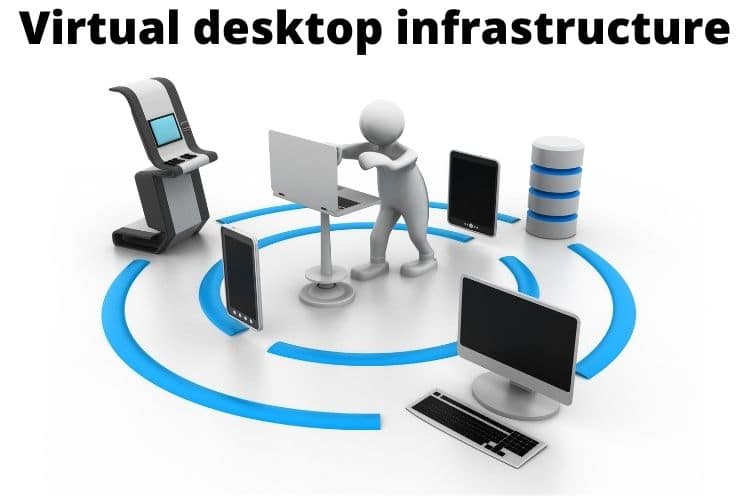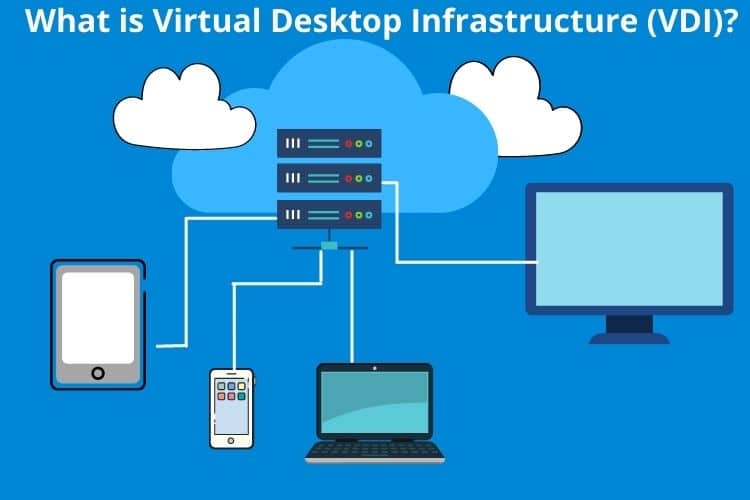
In general, Virtual Desktop Infrastructure (VDI) is the latest technology that uses virtual machines to manage and provide a virtual environment. Here VDI hosts the desktop environments on the centralized server and then deploys them to end-users after request.
VDI is the desktop virtualization technology in which a desktop operating system runs and is managed in the data center effectively.
How does Virtual Desktop Infrastructure (VDI) work?
Here you can explore how does virtual desktop infrastructure work without any issues. General, virtual machines will host the virtual desktop, and it can be hosted on the server.
The VDI desktop may be the server operating system or desktop workstation based on your use case and preference. This process takes place with the typical application software very effectively. During that time, special system software known as hypervisor creates, manages and runs virtual machines on a server ready to get provisioned.
What are the benefits of VDI?
Have a look at below to know the benefits of vdi virtual desktop:
- Gain control
IT gets more control over certain installed bases, with images that are customized for many user groups. This can reduce security risks and allow for controlled usage.
- Simplify IT management
IT management is simplified to the great extent with every instance that is managed on the central location. Here production downtime can be completely reduced.
- Drive cost savings
Through virtual desktop infrastructure, the initial investment is cost effective. This can drive cost savings to the next level.
- Enhanced flexibility
Here VDI brings in the agility through which the business is conducted. With the help of VDI, you can work on any device practically until there is a proper network connection on the machine. Therefore you can work on any device through its flexible nature.
- Increased scalability
Here Cloud computing has made the Virtual Desktop Infrastructure more effective via leveraging scalable infrastructure for consuming resources. After the consolidation of VDI infrastructure on the host server, it completely minimizes the hardware needs and purchases.
- Better security
VDI can be helpful for business to maintain their confidentiality very effectively. When your device is corrupted or stolen, then device connectivity will be terminated to protect the data.
VDI infrastructure gives extraordinary benefits for users. Therefore making use of it can be more beneficial for everyone.
What is the difference between VDI and desktop virtualization?
Desktop virtualization is the basic term for technology that divides the desktop environment from hardware that is useful to access it.
VDI is a type of desktop virtualization. But they can be implemented in many ways such as RDS – remote desktop services. Here users can get connected to the shared desktop that is running on the remote server.
What is the difference between Persistent VDI & Non-persistent VDI deployments?
The persistent VDI can able to enable personalized desktop because the user connects with the same desktop. This lets users customize their desktops. It is mainly because changes can be saved and turn their vdi environment into a highly personalized and customizable digital workspace.
On the other hand, non-persistent VDI is the generic desktop that is having a single-use connection because changes could not be saved. The non-persistent VDI approach is perfect for an organization to complete repetitive tasks since it is simple to manage and cheaper.
What are the use cases for VDI?
- Call centers
The VDI technology lets staff in the call center access tools and information that are only required to complete tasks on time.
- Remote work
Here VDI enables remote users to access the same company applications, resources, and applications when geographically dispersed.
- Regulatory compliance
Regulatory compliance can be helpful for the management to eradicate the problem in storing applications and data.
- Third-party access
While leveraging the business partner or contractor, then employees must require company-owned hardware to connect with the system. This may be expensive. Hence VDI solution is the right choice for third party access.
What are the types of VDI?
- The Persistent VDI saves itself and when you log on, you can get the machine as you left it last time.
- The Non-Persistent VDI is another type of VDI from were any changes to the machine never be saved or persisted for the next login session.
What are the limitations of VDI?
As with benefits, you also may get some Disadvantages of VDI. Check out below to know such limitations:
- Long learning curve
- Upfront cost
- Licensing cost
Here additional costs are the major disadvantages of VDI. But rather than, everything is fine with this technology.
Why VDI?
VDI offers you a wide range of benefits such as greater security, flexibility, ease of access, and user mobility. During the early days, its performance requirements made it challenging and costly to deploy on various legacy systems. These are barriers for various businesses.
But the sudden rise in enterprise adoption of HCI – hyper-converged infrastructure provides a great solution that offers high performance and scalability at a reduced cost.
How to implement VDI?
At the time of planning for VDI deployment, big organizations have to consider implementing them in the HCI environment. It is mainly because; the high performance and scalability of HCI are the natural fit for the requirements of VDI’s resources.
Implementing the hyper-converged infrastructure for VDI is not needed for enterprises that need less than 100 virtual desktop. There are wide ranges of best practices you need to during VDI implementation along with infrastructure considerations:
- Prepare your network
- Avoid underprovisioning
- Understand end-users requirements
- Perform the pilot test
Conclusion
From the above-mentioned scenario, now you have got a clear idea about VDI – Virtual Desktop Infrastructure. Virtual machines are the updated technology that powers virtual desktop infrastructure (VDI). Here virtual machines can be created via partitioning physical servers into a wide range of virtual servers with the help of a hypervisor.
So why are you still waiting? Start making use of VDI for your business and enhance the growth to the next level.
If you want to know more about our services visit our website.
FAQ
1. How is Cloud-Hosted VDI different from Normal VDI?
A normal VDI mainly makes use of the virtual desktop infrastructure (VDI) to host the desktop around the virtual machine that runs on the centralized server. The cloud-hosted VDI is the virtual desktops that can be effectively hosted on the cloud.
2. What is VDI used for?
The VDI can be effectively useful to distribute and execute the user desktop sessions from the centralized server in one or multiple data centers. That can be either in the cloud system or on-premises. VDI can be useful to grow your business to the next level.
3. How does VDI support digital workspaces?
VDI is the major part of technology that is having its uses in different types of industries. They are flexible and hence can be used as standard, non-persistent desktop and highly personalized digital workspace platforms.
4. Why enterprises should adopt Virtual Desktop Infrastructure?
Anywhere, anytime and any device can access applications and data. When data and applications are stored on the central servers, then virtual desktops enable access to time and place. Then users can enjoy the flexible and secure application availability in a most enhanced manner. This is the main reason that enterprises should adopt Virtual Desktop Infrastructure.

